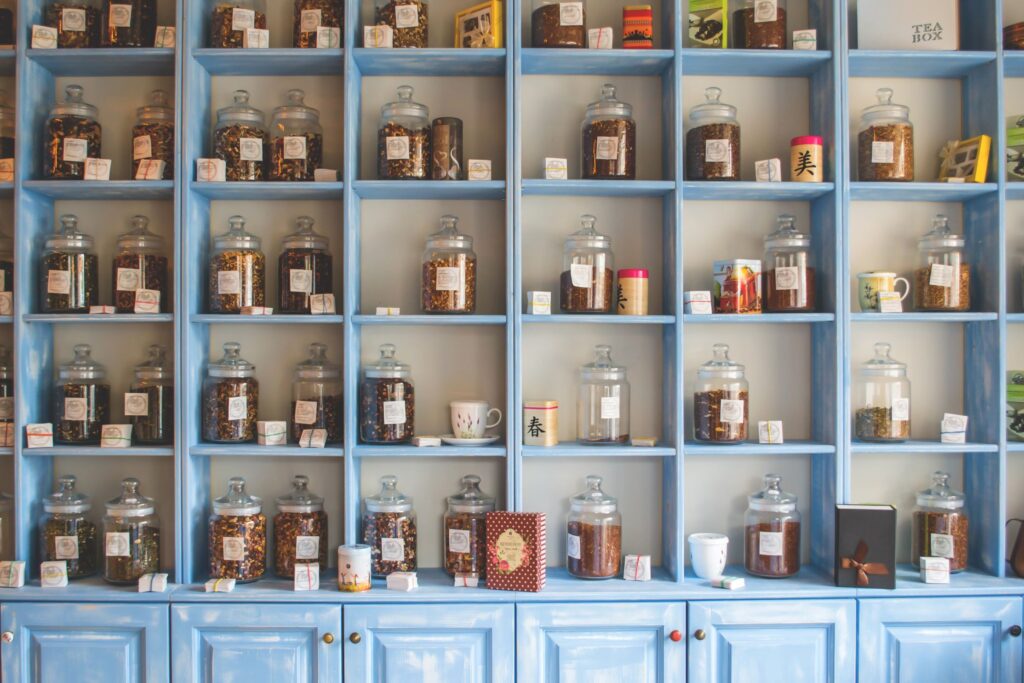Foraging 101
Do’s, Don’t’s & Discernments
When it comes to how to go about collecting wild herbs and plants, there are a set of guidelines you should be aware of and keep in mind where the lines are drawn and may sometimes crossover.
The DO’s: Be sure you are identifying the right plant to harvest – bring along a book with multiple images and hopefully during various seasons of growth to reference. It is generally encouraged to only harvest 10% of the plant – especially if there is very little in area. Know the season for most potent harvest. Go with a friend for fun and maybe request or hire a herbalist guide to plant-walk your local neighborhood(s). Look up appropriate dosage when taking your medicinal tincture and best way to take it (tea, tincture, salve…etc.). Research laws of harvesting in your national parks. Also ask your local landscape maintenance management (if you have one) or neighbors, if they spray any pesticides/herbicides. Wash your harvest or grocery bought foods and herbs.
The DON’T’s: Don’t put any unknown plant or potentially unsure plant in your mouth! EVER! Similarly, in this same case, wash your hands after you touch some unknown plant to prevent rubbing your eyes. Regarding the 10% harvest “rule,” research if there are heavily harvested plants, if any are in your area, it is often recommended to not harvest any and let it be to repopulate (i.e. Osha). Not every plant has all parts usable – once again research and understand – so don’t assume all medicinal plants are intended to be consumed internally. On the note of internal consumption, be sure to ask your medical doctor if any herbal tinctures you use may interact with prescription drugs. Don’t take plants or herbs from your neighbor or maintenance-managed public parks without asking permission! Additionally, don’t take herbs or plants from heavily trafficked roadsides, sidewalks, drainage ditches with trash or man-made debris, or areas heavily sprayed with herbicides/pesticides.
Use Discernment: I find this is very important to mention, especially because I am focusing this blog on urban and suburban medicine crafting. Obviously not all areas are alike, and this includes your local grocers; thus use your own intuitive judgement when you are finding your herbal medicinal sources. Some of you readers will not have organic availability at your grocery stores, or your entire neighborhood is HOA managed with a landscaping maintenance management that sprays chemicals. Perhaps you have space to grow. Etcetera, the list goes on. However, I too had to question if what I was harvesting was considered “safe” or avoided toxic soils. Hence, the risk is yours and use your discernment on your selections.
I will mention one experience of mine that I had to do so; I have a few drainage ditches and natural creeks running around my neighborhood. In the center I have a minimally maintained green space reserved for wild-life and owl territory. During one of my walks in mid-spring, I discovered horsetail, which I wasn’t expecting! However, this creek bed was just under a ridge of a large street and church. So, I was concerned of man-made debris in the water and run-off of chemical toxins. I chose to gather some horsetail that was as far away from the water on the upper hill as I could. Some would say this still is not consumable as horsetail are prone to absorbing heavy metals from the soil and water near them. Which I probably won’t use for any medical reasons. However, I keep these dried horsetail herbs labeled with my herb collection to caution myself so I have this example to fall on.
Common “Wild” Herbs of the City
Herbs For Supporting Immunity
- Achillea millefolium – Yarrow
Achillea millefolium or common name yarrow, is a traditionally used plant for staunching bleeding wounds. In indigenous and traditional medicines, this herb was also beneficial to recover from colds and flu especially hay fever. This plant can be found wild in temperate areas across USA and the world. Generally they are around areas that have high-traffic like roadsides or walking paths. The parts used are mostly aerial, flowers, stems, and leaves, which contain flavonoids. Can be used fresh or dried. (2)
- Key Plant Constituents: Volatile oils, flavonoids, alkaloids, tannins…
- Actions: antispasmodic, astringent, bitter tonic, lowers blood pressure, reduces fever, stops internal bleeding, anti-inflammatory
- Scientific Research:
- How to Use: This plant is a great remedy for common cold and flu as well as reducing fever. Traditionally was used to overcome a cold rather than prevent the onset of the illness. Forms of use can be taken as a short infusion (tea) or tincture. Generally dosage is one tsp of dried yarrow or 3 TB of fresh to ¾ cup hot water to rest for 10 minutes. Safe for 3 times a day.
- Arctium lappa – Burdock/Curly Burdock
- Plant Constituents:
- Scientific Research:
- How to Use:
- Plantago major – Plantain
- Plant Constituents:
- Scientific Research:
- How to Use:
- Taraxacum officiale – Dandelion
- Plant Constituents:
- Scientific Research:
- How to Use:
- Trifolium pretense – Red Clover
- Plant Constituents:
- Scientific Research:
- How to Use:
Rewards and Risks
References AMA:
- Tortora GJ, Derrickson B. Introduction to the Human Body : The Essentials of Anatomy and Physiology. John Wiley & Sons; 2015.
- Chevallier A. Encyclopedia of Herbal Medicine. Dorling Kindersley Limited; 2016.
- Warnock C. Edible Wild Plants. Familius; 2018.
- Wiles B. Mountain States Medicinal Plants : Identify, Harvest, and Use 100 Wild Herbs for Health and Wellness. Timber Press. C; 2018.
- Zachos E. Backyard Foraging : 65 Familiar Plants You Didn’t Know You Could Eat. Storey Publishing; 2013.
- Gladstar R. Rosemary Gladstar’s Medicinal Herbs : A Beginner’s Guide.Storey Publishing; 2012.
- Maria Noël Groves. Body into Balance : An Herbal Guide to Holistic Self-Care. Storey Publishing; 2016.
- Hoffmann D. Medical Herbalism – the Science and Practice of Herbal Medicine. Inner Traditions Bear and Comp; 2003.
- Kane CW. Wild Edible Plants of Colorado : Forage, Prepare, Thrive : Learn to Collect, Prepare, & Utilize 58 Wild Edible Plants of the Coloradan Mountains, Basins, & Plains. Lincoln Town Press; 2020.
- O’Brien M, Vail K. Edible & Medicinal Plants of the Southern Rockies. Ingram; 2015.
- Easley T, Horne SH. The Modern Herbal Dispensatory: A Medicine-Making Guide. North Atlantic Books; 2016.
- Yatim KM, Lakkis FG. A Brief Journey through the Immune System. Clinical Journal of the American Society of Nephrology : CJASN. 2015;10(7):1274-1281. doi:https://doi.org/10.2215/CJN.10031014

